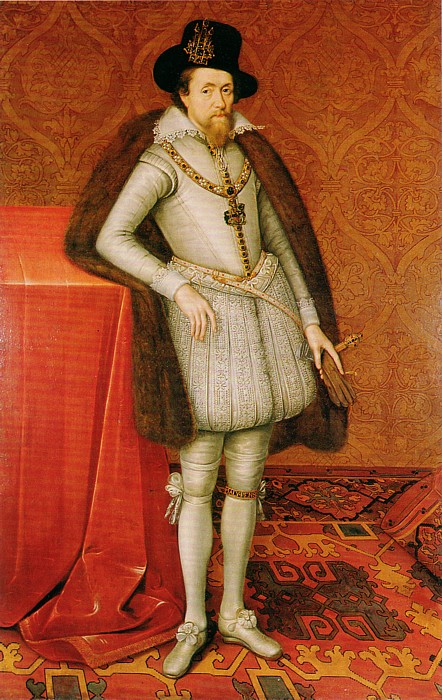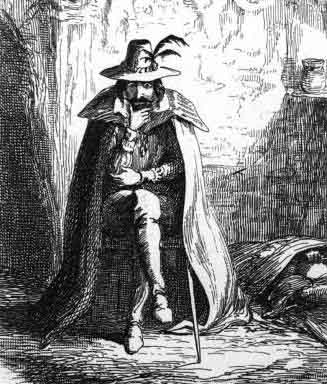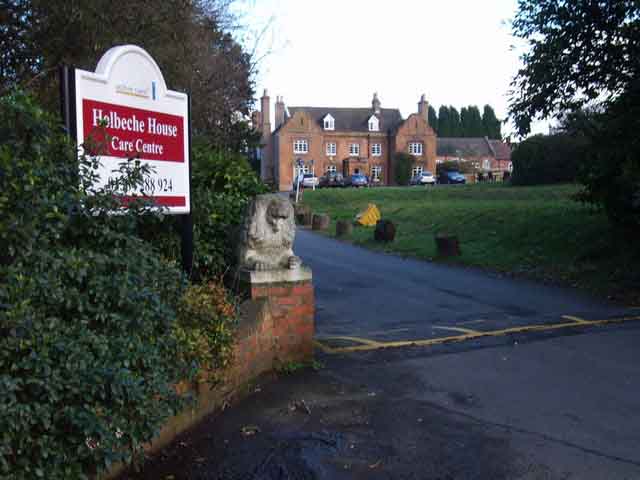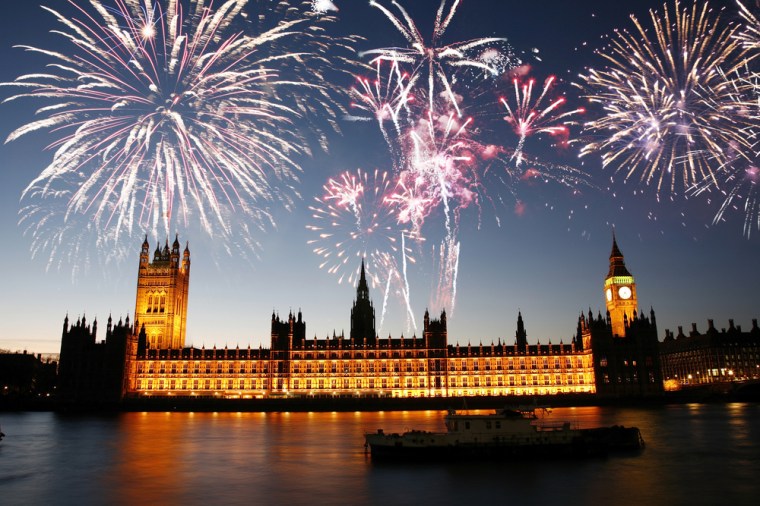Last November I wrote a post about how Bonfire Night, or Guy Fawkes Night, is celebrated in the U.K. today – and how different it is now to when I was growing up in the 1950s and 60s. In that post, I didn’t focus on why Bonfire Night is celebrated in the first place: in other words, I wrote little about the history behind the event. But in this post, that’s what I do intend to do…
In earlier centuries, the Gunpowder Plot of 1605 was often called the Gunpowder Treason or the Jesuit Treason (treason being a crime involving disloyalty to the Crown in any way, including plotting against the sovereign’s life). It was a failed plot by thirteen Catholics to assassinate James I by blowing up the Houses of Parliament.

So what was the reason for the plot?
When Queen Elizabeth I died in 1603, English Catholics who had been persecuted under her rule had hoped that their future would be greatly improved, and her successor, James I, would be more tolerant of their religion. James had had a Catholic mother (Mary Queen of Scots) and had a Catholic wife. At first, the signs were promising and reforms were made. But by 1605, under pressure from his spymaster, Sir Robert Cecil, and in an effort to appease the more extreme Protestants such as the Puritans, James once again incresed the penalties on anyone practising the Catholic faith. He ordered all Catholic priests to leave England.

This so angered some Catholics that they were willing to take extreme measures, supported by the Catholic monarchies of Europe. Two plots against James had already failed when a third group of plotters began to take shape, under the leadership of Robert Catesby, a well-to-do gentleman of Warwickshire. The thirteen young men hatched a plan to strike at the opening of Parliament on November 5th, 1605. Eight of them are shown on this picture:

Once James was dead, they intended to put his daughter, Elizabeth, on the throne, thus returning England to the Catholic faith.

It was Guy Fawkes (who had adopted the name of Guido while fighting for the Spanish) who posed as a servant called John Johnson and began locating sources of gunpowder.

The plotters rented a cellar/undercroft beneath the House of Lords (a chamber inside the Houses of Parlaiment shown on the first image above) and began stocking it with enough explosives to kill the king and the most powerful men in the land when they met on November 5th. Eventually they managed to store 36 barrels of gunpowder, enough to reduce the House of Lords to rubble.

As the day planned for the strike neared, it became clear to some of the plotters that innocent people would be killed in the attack, including people who had fought for the rights of Catholics. Lord Monteagle, the brother of Francis Tresham, one of the plotters, received an annonymous letter (almost certainly from Tresham) warning him to avoid attending the opening of Parliament on November 5th. Monteagle passed the letter to Robert Cecil.
Cecil decided not to act immediately: he wanted to catch the plotters in action. On November 4th he ordered searches of the whole of the Houses of Parliament and Fawkes was arrested. He was dressed ready for a swift get-away, with spurs on his boots.

Source: Henry Perronet Briggs – http://www.parliament.uk/gunpowderplot/children_arrest.htm Wikimedia Commons
Most of the conspirators fled as they learned of the plot’s discovery. Several made a stand against the pursuing Sheriff of Worcester and his men at Holbeche House, Catesby’s home.

Catesby was one of the plotters shot and killed, leaving eight of the survivors, including Guido Fawkes, to stand trial.
Fawkes suffered two days of severe torture on the rack in the Tower of London before confessing everything.

His chief interrogator was Edward Coke:

attributed to Thomas Athow, after unknown artist, after Cornelius Johnson. Public Domain. Wikipedia Commons
The confession Fawkes signed shows how much his joints, including those in his hands, had been so severely damaged.

At their trial on January 27th 1606, the eight surviving conspirators, including Fawkes, were convicted of high treason and condemned to be hanged, drawn and quartered.

The punishment consisted of the the victim being dragged, usually by a horse, on a wooden frame to the place where he was to be publicly put to death. This involved a gruesome procedure in which the victim was first hanged until almost dead, them emasculated, disembowelled, beheaded and quartered (cut into 4 pieces). The intestines /entrails were thrown onto a fire and the other remains were usually displayed in prominent places, such as London Bridge.
In the months after the plot, new laws were passed removing Catholics’ right to vote and restricing their role in public life. It was 200 years before these restrictions were fully lifted.
*
In Britain we continue to celebrate the failure of the plot against James I and the execution of his would-be assassins on November 5th every year. The burning of a ‘guy’ – an effigy of Guido Fawkes on top of a bonfire – has ensured the plot survives in national memory.
Remember, remember, the fifth of November
Gunpowder, treason and plot.
I see no reason why gunpowder treason
Should ever be forgot.
Here are a few pictures of Bonfire Night in the U.K.







Absolutely fascinating Millie! You truly are a treasure trove of facts and stories!
I had probably learnt this in school, but of course I’ve forgotten most of it!
Hedgey and I thank you! 😊
I think all British schoolchildren learn about the Gunpowder Plot, Hedgey. Remembering all the details is a different matter, though. Lol. I’ve taught it umpteen times to Year 8s. I wrote this post because I didn’t do about the history of the night last year. I might reblog that one tomorrow – haven’t decided yet. It’s difficult to know whether anyone other than British people would find it of interest. Thank you for liking it! 🙂
We were in London on Guy Fawkes Day entirely by accident about 12 years ago – unfortunately having just arrived, the fireworks were at the end of jet lag day, and we had no idea why all the noise and celebrating until someone told us what was going on.
Thanks for fleshing out our sketchy understanding of what it is actually about. What a gruesome display all that hanging, drawing and quartering must have been!
Hi Beth. Thank you for reading! I can imagine you wondering what on earth the noise was on that day 12 years ago. It can be really loud and bright, too, on Bonfire Night. Yes, the conspirators came to a very nasty end. It’s hard for us to think about such awful methods of execution nowadays. But the past was a very violent place and punishments were meant to be a deterrent, I suppose.
Did you see my message about not being able to get into your blog through your link – either in the notifications or my list of followers. The only time I can find you is when you post. I haven’t had chance to go into my Reader today, but I’ll have a look soon to see if you have recently. 🙂
It will be up again in a week or so, Millie. Someone left a really nasty comment related to the Camino post when I allowed a site administrator to link it to the site for women trying to be safer on the Camino. I’ve made the whole blog private until the link is removed and the document file that was downloaded to the site is removed as well. It wasn’t smart to let anything from a personal blog be made public like that and I’ll never do it again!
Thank you for telling me this, Beth. I can understand how distressing it must have been for you. The safety of women on the Camino is such an important issue, and I think you did a good job of pointing out the dangers. It’s unbelievable that anyone should make nasty comments about it. As most of us, you weren’t to know the dangers of letting a personal blog link to yours. Hopefully, you can put it all behind you now.
That must be the most compelling narrative of those events that I’ve read, and definitely the best illustrated — great post, Millie!
Thank you for that great comment, Joy. It’s much appreciated. I suppose I’ve got a head start with this topic, having taught it so many times to Year 8. 🙂
I was surprised to see you on WP, as I know you’re doing NaNo. Lou told me how much you’ve written already. Very Impressive! Keep going like that and you’ll be publishing that book before long. Very best wishes, Joy. You write so well and I’m sure your book will be great. 🙂
Well, I have to interrupt my writing to do my real job anyway, so I might as well take a short break and catch up on email and blog posts. I managed to get a lot written on Sunday (Day 1) and a fair amount on Monday, but I’ve been busy enough with work since then that I’m risking falling behind. Thanks for the support! What I’m writing so far feels pretty rushed but pretty good. Still, the amount of editing that will be needed post-NaNo is daunting, especially to get all my previously-drafted scenes to line up with the new scenes I’m writing for NaNo. (Deep breath…)
I’m hearing the same from Lou, although she hasn’t written as much as you. Sunday obviously gave you a kick start. I agree, the editing will be a big task – but something that has to be done. 🙂 (No need to reply again – better to spend your time writing!)
This is something I have never really heard of. It is quite a celebration with fireworks etc… Is government and schools closed? A national holiday? So interesting, you are so knowledgable.
No, there’s no holiday of any kind. It’s just an evening thing, after school and work. Some people celebrate it on the closest weekend to make things easier, especially with children who want to stay up late when they have school the next day. As for being knowledgeable, I just know a lot about this topic because I taught it for many years to Year 8’s. Nowadays, many people go to organised displays of bonfires and fireworks so they can see the huge mortars and things. I prefer the old community get-togethers. Times change. Thak you, Suzanne.
I did not know the details of the history behind the Bonfire Night, so interesting. I believe that, if all history books would be written with the same passion you write, kids will learn and remember history a lot easier, it’s fascinating!
Wow, thank you, Daniela. I do love history and enjoy writing about it. As you know, Bonfire Night is still very popular, although perhaps not as much as when I was a child in the 1950s. We’ll be seeing lots of fireworks tomorrow and hearing lots of loud bangs. It isn’t a good night for pets. They should all be kept indoors as the noises terrify them. 🙂
I’m back to enjoy your posts, Millie. I knew about Guy Fawkes, but didn’t know all the historical details. The punishment in those times was gruesome and inhumane.
Hello, Irina. 😀 It seems ages since we spoke. I wondered whether you were busy writing, or perhaps on holiday. I definitely agree about those horrendous punishments … inhumane is such a good description of them. Barbaric springs to mind, too.
I’ve had a ridiculously busy couple of weeks with family visiting, so I’m struggling to get round all the posts I want to read. We have a free day tomorrow, so I’m seriously hoping to do some catching up then. I’ll pop over to your blog and check out any recent posts. Lovely to chat again, Irina … hope you are both well.
Hello Millie, neither on holiday nor busy writing, just busy following the news, the European refugee crisis and a terrorist attack in Sydney a month ago today… And today is the first day I’ve posted something since September 28th.
Thank you for letting me know you’ve posted. I wondered when you’d be back. The European refugee crisis has been on everyone’s mind, as has that awful attack (in a chocolate cafe/shop, I think?) in Sydney. There’s a lot going on all over the world and most of it very disturbing.
I’m writing on my smart phone… My reply was just posted before I finished. Well, I’ll have to do much more catching up since you are a prolific blogger … Have great weekend! 🙂
Please don’t spend time doing that, Irina. It’s nice to see you again, but it would take ages to play catch up that far back. Have a wonderful weekend, too – although you’re probably already into Sunday as I’m writing this. 🙂
I dropped the “a”…Have a great weekend! 🙂 🙂
😀 😀
Thanks, Millie, for releasing from the ‘catching up duty’. 🙂 But I’ll still have a look. That attack in the cafe happened last year. This year, a month ago, a 15-year-old boy shot an innocent man, an IT employee, who walked out of the police station after finishing work. When he killed him he continued brandishing the gun yelling ‘Allah Akbar’. Detectives quickly ran out and shot the boy. A 17-year-old is in custody in connection with the attack. DrIt’s mindboggling that young boys should … Have a great week, Millie.
It’s mind blowing that such atrocities are committed in the name of religion. That’s seriously worrying. And, as you say, young boys being indoctrinated to believe killing is what the religion demands is beyond belief. It’s so frightening to think that these attacks can happen anywhwere, too.
Geez, the end is all messed up… Pressed accidentally the wrong keys…Posting from my smart phone again! 🙂
I admire the way you can send messages on a smart phone. Irina. I wouldn’t know where to start. I get everything wrong if I so much as attempt to write on my Kindle or tablet, let alone a small phone! Your message was fine, even without the last few words. 😀
I have only 4GB per month for my laptop, so I must use my phone which is connected to Sasha’s big computer through Wi Fi. But it’s a pain… You’re not missing anything. 🙂
Oh, I’m glad you’ve told me that. Now i don’t feel so stupid in not having one. It takes me all my time to cope woth my kKndle – and i have a Samsung tablet, too. But all I use that for is taking photos! 🙂
I had no idea so this was very informative! You always have a wonderful way of explaining and bringing the interesting facts to our attention. I love the pictures it helps to bring it all to life! Another fascinating post!
Thanks for that, Lynn! I really like to find pictures to include in posts like this. As you say, it does help people to visualise that things I’m talking about.Thank goodness for the free images from good old Wikipedia and Wikimedia Commons. 🙂
yes is really does help to have pictures!
There was no point trying to blow up the Houses of Parliament on Nov 5th. Everyone would have been out watching the fireworks! Ha ha 🙂
Great piece of history! I like your caption under the engraving of the plotters. That’s a lot of spiky beards!
You know you’re probably right. No one in their right mind would be indoors on Bonfire Night. Catesby didn’t think that one out too well! 😀 As for the spiky beards… that Dutch atrist evidently had a thing about them. Perhaps he had one himself. 🙂
Great post Millie, full of lots of wonderful historical facts 🙂
Hi Andy … thank you! Yes, it’s a very interesting topic and I’m totally intrigued by it all. I’ve taught it so many times know the story very well. I also enjoyed finding the images to illustrate it. 🙂
They were very apt images you used 🙂 Just a wee point about the images, did you know that you should still attribute the author/photographer of the original image, even if the image is ‘Creative Commons’ or out in the public domain. Google tends to penalize websites that don’t include the attributes 😦
I thought I had done. I usually quote what it says abpout the image on the page where I get it from. I’ll have a check to see where I’ve missed that. Thanks fpr pointing it out. 🙂
I’m just happy that you are aware of it, I wouldn’t like it if Google was penalising your wonderful blog 🙂
Hi again. I’ve just checked my Guy Fawkes post and I have missed the author’s name on Robert Cecil’s picture. All the rest seem OK. Some images I use are from Shutterstock, so I didn’t think I had to say anything about thosr. I’d better check that, too! Thanks for keeping me on my toes. As you say, I would’t like a hefty fine! 🙂
You are probably okay anyway Millie, if you’ve used photos from Shutterstock. I thought maybe you had done a ‘Creative Commons’ Google image search for your pics. In that case, you need to provide a link back to the original website on which the image is found 🙂
I have used Creative Commons, too, Andy – quite a lot. On most occasions I’ve attributed the author/photographer, but I didn’t realise I had to link to the site it came from. I’ll remember to do that in future, but I’ve far too many in past months to update. I’ve just looked it up and now know that you are right, so I’m in a bit of a quandary now. I’m very grateful that you told me, anyway.
I’m sure you will be fine with your old posts Millie, just remember to provide the appropriate links for any future posts 🙂
Will do!
Wow ! Such an informative post Millie! So much of history ! I’ve never heard about this , was a very good read:)
Thank you! It was an imortant event in English history, Freda, and I thought people from outside the U.K. just might find it interesting, too. I always find talking about the punishment the conspirators received very difficult. It was so gruesome. I’m writing this on Bonfire Night and, as so often, it’s raining. There have been a few fireworks around our village, but I think many people will be waiting to celebrate at the weekend. 🙂
🙂 It was nice to know about this , Millie! have a lovely weekend 🙂
Thank you, Freda.You too. 🙂
I do vaguely recall learning about Guy Fawkes in a history class in high school. But all I remembered as this point was that I had heard the name before! Thanks for the review! And, remind us again next year.
Thank you, Dinata. If I post about Bonfire Night next year, I think I’ll need to look for a different angle. I’m sure I can come up with something.
I had never heard this story, although I recognize the name. Very interesting. 🙂
Thanks, Susan. I imagine few people outside of Britain would know about Guy Fawkes, although someone from the U.S. said they vaguely remembere the story from a lesson at school. I suppose it depends on what individual schools cover in their curriculum. 🙂
Very interesting! Thanks for sharing!
Pretty horrible story, but I’m fascinated by how all this was chronicled to such detail (probably sounds naive of me)
Artists in the 17th century were fond of recording events on canvas or wood (as etchings). There were also written records. The one uncertain picture is of the 8 conspirators. The artist painted this after the event and almost certainly never saw the men. He’s simply used his imagination, based on fashions and popular beard shapes of the time!
🙂
Oh, what a history to this celebration. The torture mechanism used during those days were very cruel.
I read this post later and ‘A Penny For The Guy’ first. You’ll understand from the comment that our celebration is totally different but agree on the essence of celebration, which is – burning and enjoying.
Thanks for this post Millie. I had heard of Bonfire Night but never knew the story behind it. 🙂
It does seem odd to use the word ‘celebration’ for the horrible deaths of the plotters. But what the celebration is about is the saving of the king and all those in the House of Lords. I agree, the torture and execution methoda in the 17th century were totally barbaric.
Very informative. Totally took me back to my high school history days.
Thank you! 🙂 The story about Guido Fawkes is interesting because it was such a daring plan that went so badly wrong. I think the gruesome end of the conspirators is the main thing that captures people’s attention. Such awful punishments in those days! I’m glad my post reminded you of (hopefully) happy school days.
There is something about reading horrific events in history that makes me grateful to be alive in the present. Thank you, Millie, for the history lesson.
You’re so right. Many past times were very violent and nothing in life was certain. Death came to the masses in many forms, like plagues, as well as constant battles. Life in the 21st century is wonderful by comparison – and much easier, too, with all the technical advances. Thank you so much for reading, Kelly.